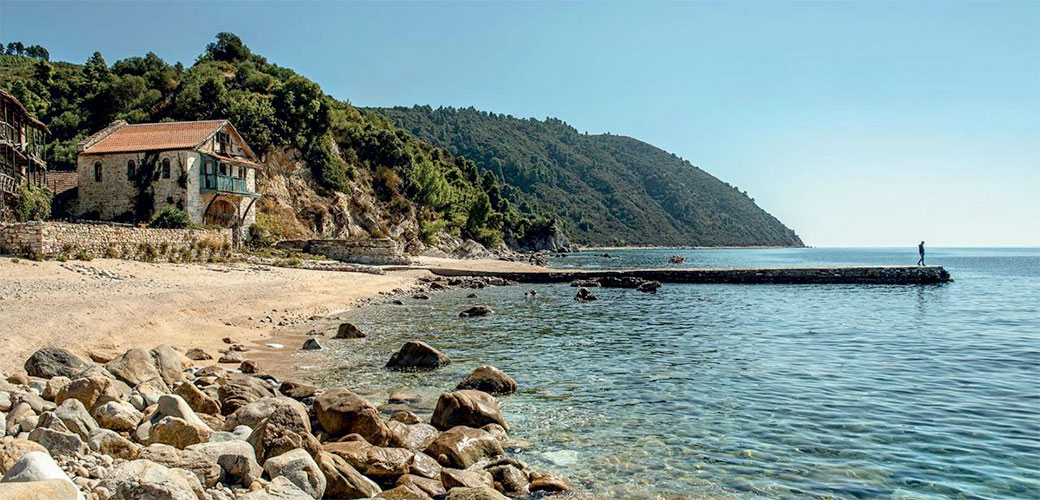
Mount Athos, known widely as Agio Oros (Holy Mount), has constituted the most important center of Eastern Orthodox monasticism since the late 10th century, and it is among the greatest sites of world cultural heritage. It occupies the northernmost projection of the Halkidiki peninsula, 45 km in length and between 5 and 10 km in width, and it derives its name from the mountain peak (2,033 m) that towers over this rocky strip of land.
The Athos peninsula is covered in woods, pastures, and small fields that have been cultivated by the monks for centuries, as they practice their “handiwork” In folk tradition, it is also called the Garden of Panagia (Holy Mother of God), since the Virgin Mary maintains the privilege of having her own clergy and territory. Although tradition speaks of the first hermits settling on the uninhabited Athos peninsula in the late 8th century, the first ones formally cited are Petros the Athonite, a person shrouded in the mists of legend, and Agios Efthymios the Younger, who is said to have arrived in AD 859. Although tradition speaks of the first hermits settling on the uninhabited Athos peninsula in the late 8th century, the first ones formally cited are Petros the Athonite, a person shrouded in the mists of legend, and Agios Efthymios the Younger, who is said to have arrived in AD 859. Sources place the emergence of cenobitic monasticism on Mount Athos in AD 963, when Athanasios the Athonite, supported by his friend, the Byzantine Emperor Nikephoros Phokas, founded the oldest monastery of Megisti (Great) Lavra. In AD 972, Ioannis Tsimiskis signed on parchment the famous “Tragos”, the first “Typicon” or regulation of Athonite monasticism, laying out the rules for the organization and operation of cenobitic communities.
The ”avaton” was among the most ancient and unbreakable rules. . In 1060, the Byzantine Emperor Constantine IX Monomachos instituted a ban on entry to the Mount for eunuchs, children who had not yet grown facial hair, and all women. From the early years of its history, it attracted interest and secured favor, protection and tax immunity from the Byzantine emperors and other regional Orthodox rulers. At the same time, the Ecumenical Patriarchate of Constantinople claimed spiritual jurisdiction over the Mount Athos monasteries, maintained to this day.
Copyright © 2022, AXTADA Municipal Enterprise – All rights reserved. Design & Development: New Media Technologies